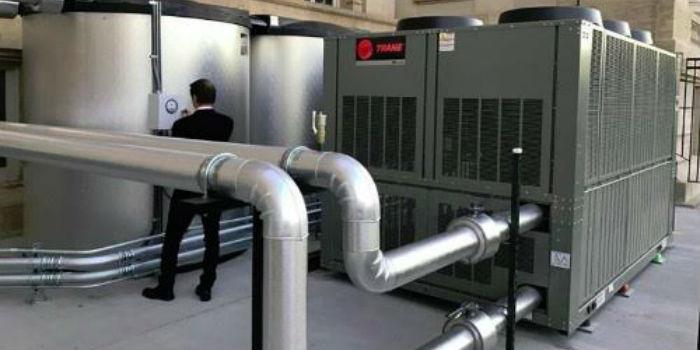 Latin America. Buildings are responsible for 47% of global greenhouse gas emissions and, according to Navigant Research, the existence of these is expected to increase by 13% between 2014 and 2024; however, the contribution of buildings to global greenhouse gas emissions can be modified. Many of those emissions come from the energy used to operate buildings, which can be reduced. How? A key element is thermal storage technology.
Latin America. Buildings are responsible for 47% of global greenhouse gas emissions and, according to Navigant Research, the existence of these is expected to increase by 13% between 2014 and 2024; however, the contribution of buildings to global greenhouse gas emissions can be modified. Many of those emissions come from the energy used to operate buildings, which can be reduced. How? A key element is thermal storage technology.
Thermal storage technology allows excess energy, which comes from a variety of renewable energy sources, to be stored and used at different times of the day, reducing demand and use of the power grid.
Thermal storage technology becomes more prevalent as the industry looks for ways to increase resilience, improve sustainability, and reduce operating costs. Shifting peak demand to off-peak hours helps utilities plan their peak capacity requirements and helps the power grid incorporate more renewable energy sources. At the same time, it helps electricity customers save money and reduce emissions.
Recent research found that thermal storage systems are more valuable to utilities than previously believed. The Research Project Valuation of Thermal Energy Storage for Utility Grid Operators, conducted by the Western Cooling Efficiency Center at the University of California-Davis (UC Davis) found that thermal energy storage is up to 77% more valuable than previously estimated utilities. He showed that the current method for estimating the power grid impact of thermal energy storage systems, based on a "10-day average baseline" and "typical weather year (TMY3)," predicts the impact of disconnecting the cooling system on the power grid. Thermal energy storage can have an even greater impact on reducing dependence on and use of the power grid. In fact, it's already doing more than we think to help reduce greenhouse gas emissions.
As an energy resource, thermal storage improves the utilization of transmission, distribution and renewable generation lines. It is therefore important that the impact of the power grid of thermal storage devices be more accurately estimated in order to plan the distribution of resources and adequate financial compensation for the service they offer. Thermal storage requires a holistic view of energy use, taking into account how it can mitigate peak load demand and the environmental conditions under which peak load is assessed. As the ambient temperature increases, the value of the stored thermal energy increases due to its relationship with the maximum load demand.
Thermal storage has greater value when it is needed most. Therefore, the benefit of an on-grid thermal storage system should be based on how it can operate in extreme heat conditions. The value of thermal storage systems is most accurately quantified when based on the American Society of Heating, Refrigerating and Air-Conditioning Engineers (ASHRAE) 1 in 10 standard and when the natural dynamics of the building load are appealed.
The ASHRAE approach is often used for traditional utility infrastructure and includes the most extreme weather conditions. When this approach is applied to thermal storage, the value increases by 28% compared to other approaches. The predominant "10-day average baseline" approach predicts the value of thermal storage up to 77%, excluding demand response events, weekends, and heat events. When weekends are excluded, the significantly higher thermal loads needed to compensate for Mondays after a hot weekend are not assessed. To properly quantify the value of thermal storage, the value must be based on the load that would otherwise have been necessary to provide cooling during extreme heat conditions. The UC Davis findings reinforce the benefits of thermal storage to offset thermal load and show how we can more accurately estimate the impact of the power grid.


























Leave your comment